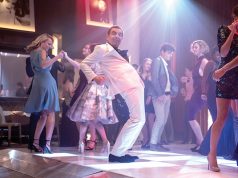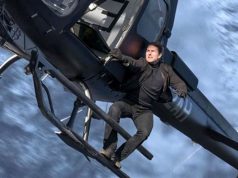Though the character has remained basically the same, the James Bond movies have always been products of their time. “From Russia with Love” (1963) came at the height of the Cold War; “Moonraker” (1979) arrived just in time to capitalize on the recent popularity of space-age films. “Casino Royale” reinstalled Bond in a modern, realistic setting, and now, with “Quantum of Solace,” the transformation is complete: The 007 series has achieved total Bournification.
The influence of Matt Damon’s Jason Bourne films is obvious in “Quantum of Solace,” which comes off as an exciting but shallow impersonation of them. Picking up the action mere minutes after the events of “Casino Royale” (it’s the first Bond movie to really function as a direct sequel), the story follows Bond (Daniel Craig) as he seeks revenge on those responsible for the death of his “Casino Royale” lady friend. This vengeance-driven 007 is a sourpuss; the film has very little humor or levity. What there is mostly comes from M (Judi Dench), who tells an over-violent Bond, “If you could avoid killing every possible lead, it would be much appreciated.” She’s snarky, you see.
Tangled up with Bond’s agenda is a new evil organization called Quantum. (That word is mentioned twice; the phrase “quantum of solace” is never uttered, alluded to, or laughed at, except in the audience.) Led by a dastardly European fellow named Dominic Greene (Mathieu Amalric), who has the chilling Bond-villain characteristic of being European, Quantum is a surprise to Her Majesty’s MI6, which up till now has been completely unaware of its existence. Quantum is in the business of destabilizing governments, with Bolivia as its latest client. As payment, Greene wants an expanse of Bolivian desert to use however he wants.
The film is as globetrotty as ever, with Bond bouncing from Italy to Haiti to Austria to Bolivia and various points in between. He woos the requisite Bond Girl, Camille (Olga Kurylenko), and dallies with a fellow government agent, Strawberry Fields (Gemma Arterton). CIA agent Felix Leiter (Jeffrey Wright) is still an ally. Still no sign of Miss Moneypenny or Q, and the nifty gadgets and dirty wordplay are as scarce as they were last time around. You know the routine.
And it does feel like a routine at times. Mark Forster, having directed non-action flicks like “Monster’s Ball” and “Finding Neverland,” comes to the Bond franchise determined to show skeptics just how much action he can cram into one film. The first half-hour is thrilling, the violence gritty and realistic, the sound effects suitably crunchy. But then the realization settles in that this is all you’re going to get: one action sequence after another, a little bit of plot, and only scant traces of Bond’s rakish wit, much less any of the complicated psychology that started to emerge in the last film. (It’s a little strange, considering the screenplay is by the same team that wrote the far superior “Casino Royale,” Neal Purvis, Robert Wade, and Paul Haggis.)
This is the shortest Bond film yet, and one of the more action-packed. Daniel Craig, who won over the naysayers with his performance last time around, will probably continue to curry favor here. He’s proven himself more than capable of playing the suave but rattled secret agent — more than capable especially because in “Quantum of Solace,” not much is required of him beyond the physical. This is a lesser Bond outing, squandering some of the potential suggested by its predecessor but still worth seeing for its energetic fight scenes and chase sequences. It’s no Bourne, though.
B- (1 hr., 46 min.; )





